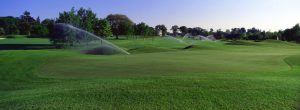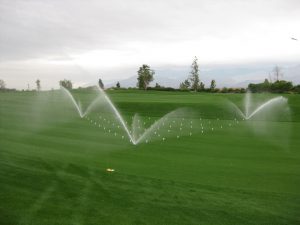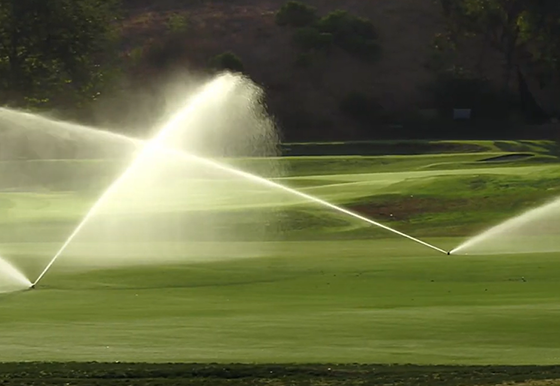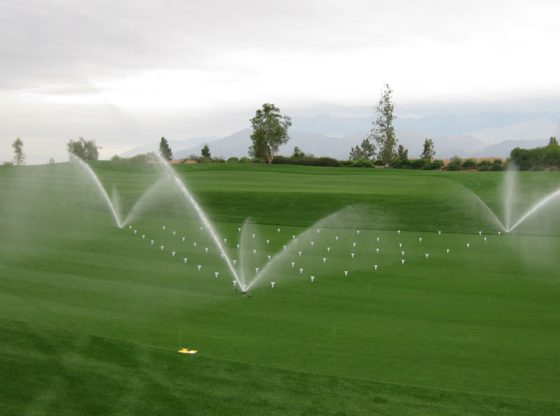Superintendents must rely on a supply of irrigation water sufficient enough to maintain the turf at a minimum level of aesthetics and playability for the golfers their course serves.
The level of surface quality and beauty is based on golfer expectations. For many courses those expectations have been allowed to decline somewhat in recent times. Their golfers understand costs and know golf courses are struggling in this economic environment. For higher end golf clubs expectations have remained stable or even increased in some cases!
Water Availability
Other factors influence how much water a golf course requires or has available. These factors can be climate, type of turf grass, agronomic and soils conditions, regulations, and water availability.
The Struggle to Maintain Turf Quality
Our service area (Ohio and Kentucky) generally has enough water available and reasonable regulatory  conditions. Challenges arise from site and soil conditions and wide variation in rainfall throughout the growing season.
conditions. Challenges arise from site and soil conditions and wide variation in rainfall throughout the growing season.
Golfers (and often course management) have no idea the struggle many superintendents face each year trying to maintain acceptable turf quality! That struggle is now amplified by the fragile financial condition many courses are in. But let’s get back to how much water a golf course requires.
Irrigation Needs
Each course will vary because of size of the irrigated area and management practices. Also, water use each year will vary depending on climatic conditions. The timing and amount of rainfall, temperatures each month, and sunshine. There is no fixed answer.
 Most professionally designed irrigation systems are designed to handle slightly higher than normal conditions. This means that during drought seasons there will be a struggle. Water supply is often a problem in those times.
Most professionally designed irrigation systems are designed to handle slightly higher than normal conditions. This means that during drought seasons there will be a struggle. Water supply is often a problem in those times.
Irrigation water applications are easiest to measure and match to need when considered in inches of water. While impossible to accurately measure water storage in the soil root zone and use by the plant material across a golf course, we can make reasonable estimations using Evap-Transpiration (ET). Thus water application and water use are both measured in inches.
Typical ET rates for our area are highest in July-August at .21 inches per day forming a bell shaped curve for earlier and later months. The irrigation system should follow ET to reduce water consumption.
By measuring site environmental conditions, software can then calculate an estimated water use on a daily basis. Irrigation scheduling will then replenish soil moisture. ET based irrigation scheduling will reduce water use up to 35% annually.
Without an automated ET scheduling system, a superintendent will manually adjust irrigation run times to match perceived plant water use. Water can be saved but with much increased labor input.
Examples from My Area
A typical growing season in my area (Dayton, Ohio) will create a need for about 6.17 inches or 168,000 gallons per acre. Course size varies, but consider a course with 130 irrigated acres and you have a total water need around 21 million gallons.
If the year has more beneficial rain events, the irrigation water use declines drastically. This year (2011), several courses in northern Ohio saw irrigation water application drop to 30% or so of historical averages.
Demand will change with climate. Check with those in your area for localized numbers.












